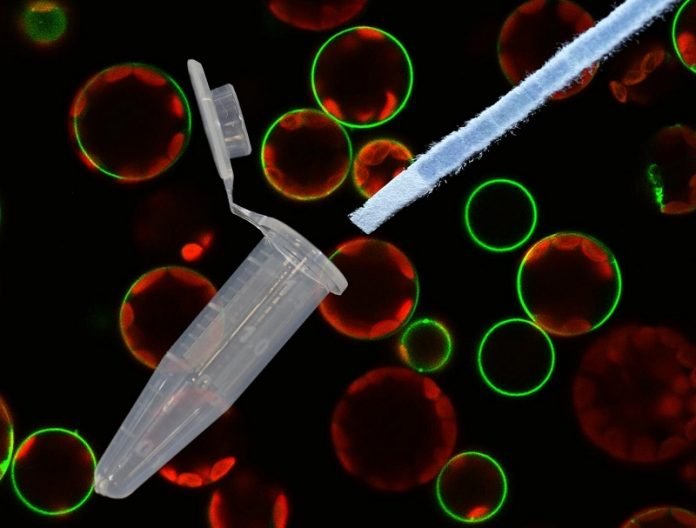
Technology that helps to quickly extract and analyze genetic material could be used for cheap, accurate and mobile COVID-19 testing, including at airports and remote testing centers.
‘Dipstick’ technology, developed by the University of Queensland’s Professor Jimmy Botella and Dr. Michael Mason, allows genetic material to be extracted in as little as 30 seconds, with a full molecular diagnosis in 40 minutes.
“That process is currently achieved using large and expensive commercial set-ups that require multistep procedures and specialized laboratory equipment,” Professor Botella said.
“In contrast, our dipstick tech is incredibly cheap and can be used virtually anywhere, without the need for specialized equipment or a laboratory.
“Our tech enables the purification of DNA and RNA nucleic acids from patient samples—a critical step in COVID-19 diagnosis.
“Combined with a portable diagnostic machine we’ve developed—which fits in your hand and can be powered by a car’s cigarette lighter connection—we could enable faster identification and isolation of positive patients, helping to reduce the spread of the disease.
“We’re hoping it will be used to expand COVID-19 diagnostic testing to non-laboratory environments such as airports, remote testing centers and GP clinics.”
The process can be used to extract genetic material from most living organisms, including people, livestock, bacteria and viruses.
Dr. Michael Mason said the team had already applied the technology in other areas, primarily to fight plant pathogens.
“We’ve successfully used the dipsticks to identify diseases associated with fresh produce and important crops that are critical for feeding some of the world’s poorest people,” Dr. Mason said.
“Even in remote locations, such as isolated plantations in Papua New Guinea, we’ve successfully used the technology to identify a pathogen killing coconut trees.”
“Really, this technology could be used to detect almost any disease, anywhere.”
The researchers said their dipsticks can be produced quickly, cheaply and in bulk using a household pasta maker.
“It was quite a surprise, in a year full of surprises,” Professor Botella said.
“Using a low-cost pasta maker, wax and filter paper, we are able to rapidly make hundreds of dipsticks, ready to be used, in only a few minutes.
“The simplicity of the manufacturing process and the low-cost and accessibility of the required materials is a significant advantage of this technology.
“It means it can benefit users in modern research laboratories as well as low-resource facilities in developing countries, high schools and small university teaching labs.
“It’s faster, cheaper and mobile, so let’s put it to work.”



